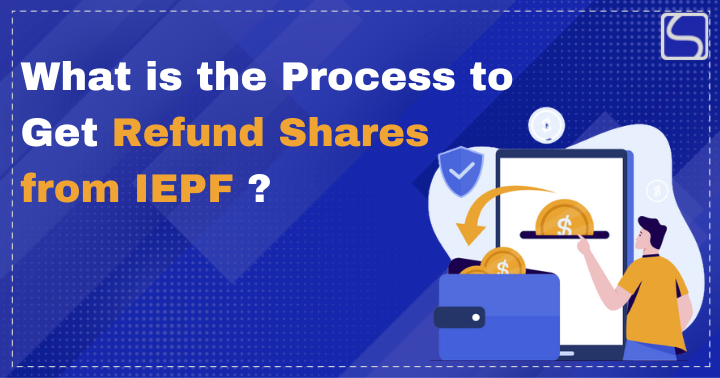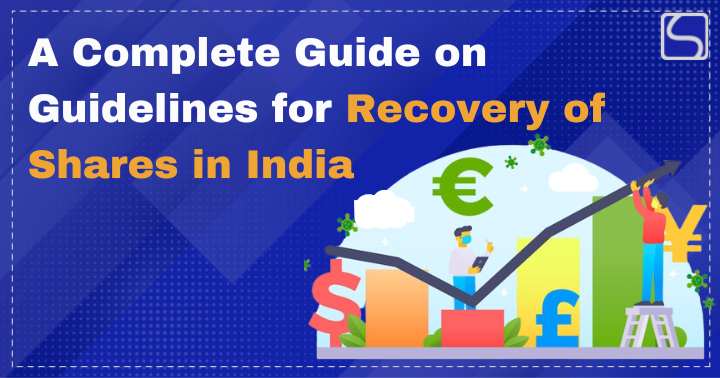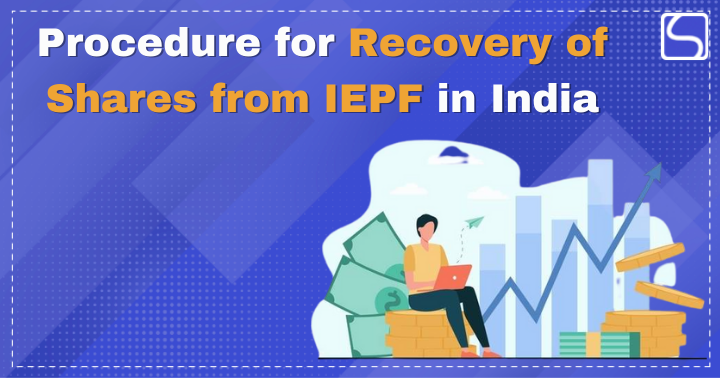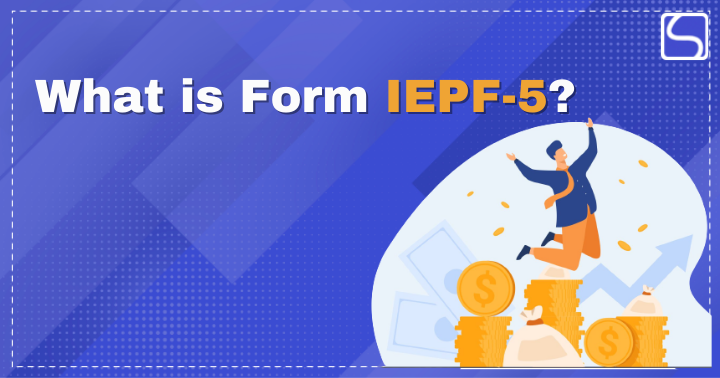What is the Process to Get Refund Shares from IEPF?

Astitva Kumar | Updated: Dec 29, 2022 | Category: Recovery of Shares
There are two aspects of profits earned by a company the first one is dividends, and the second one is retained earnings. In general concept, the term ‘dividend’ is used to denote the profits of a company distributed to its shareholders. The term ‘dividend’ has been defined under Section 2(35) of Companies Act of 2013. There are two aspects of profits earned by a company, one is the dividend, and the other is the retained earnings. Simply put, the term dividend denotes the company’s profits that are distributed among its shareholders. Section 2, sub-clause 35 of the Companies Act of 2013, defines the’dividend’. The dividend is usually payable for a financial year if the distributable profits are available after the finalisation of accounts; therefore, we call it the Final Dividend. The company declares the final dividend at its Annual General Meeting (AGM) on the recommendation of Board of Directors. Section 123 of the Companies Act of 2013 deals with the provisions relating to the declaration and payment of dividends. The section has been amended by the Companies (Amendment) Act of 2015. In this blog, we will discuss how to get Refund Shares from IEPF.
Section 123 to Section 127 under Chapter VIII of the Companies Act of 2013 discusses the provisions related to declaration and payment of dividends.
- Section 123 of the Company Act talks about the declaration of dividends.
- Section 124 of the Company Act talks about unpaid dividend accounts.
- Section 125 of the Company Act talks about Investor Education and Protection Fund.
- Section 126 of the Company Act talks about the right to dividends, rights shares, & bonus shares to be held in abeyance pending registration of transfer of shares.
- Section 127 of the Company Act talks about punishment for failure to distribute dividends.
Table of Contents
What is IEPF?
Investor Education and Protection Fund, also called IEPF, was launched to protect and promote the investor’s interest. All the unclaimed or unpaid amounts of a company are clubbed and credited to InvestorEducation and Protection Fund. The funds then are utilised for various purposes as provided under the act. The fund was set up under the guidance of the Securities Exchange Board of India (SEBI) and the Ministry of Corporate Affairs India[1], also called MCA.
The IEPF is governed by the IEPF Authority, which consists of a chairperson, a chief executive officer and other members, it should not exceed seven, and they must be appointed by the Central Government.
Who are eligible to get Refund Shares from IEPF?
Any person or a shareholder whose unclaimed or unpaid amounts are transferred by a company from the unpaid dividend account to the Investor Education and Protection Fund is eligible to claim their refunds from the IEPF authority. The amount can be claimed as per the procedure mentioned under Section 125(3)(a) of the Companies Act and Rule 7(1) of the Investor Education and Protection Fund Authority (Accounting, Audit, Transfer and Refund) Rules of 2016. The shareholders are required to fill out the form IEPF-5 to get Refund Shares from IEPF.
Process to get Refund Shares from IEPF
Following is the step-by-step process to get Refund Shares from IEPF:
- Step 1 of the process is to fill out the application form.
The first step in getting Refund Shares from IEPF is filling the application form. An applicant who wishes to claim the refund of shares from the Investor Education and Protection Fund must submit the application by filling form IEPF-5 on the MCA portal. Along with the form, the following documents/information will be needed:
- Particulars of the applicant
- Information regarding the company from where the amount is due, along with the valid CIN number of the company.
- Details regarding all shares that the applicant wants to claim
- Details of the amount that the applicant wants to claim
- Aadhaar details of the applicant. If the applicant is an NRI or foreigner, then their passport/OCI/PIO card details will be required.
- Details of the bank account to which the applicant’s Aadhaar is linked
- Details of your demat account number
- Step 2 of the process includes submitting the claim to the Company. After the applicant has submitted the form IEPF-5, the exact needs to be sent to the company’s IEPF Nodal Officer/Registrar, along with the following documents:
- A signed copy of the Form IEPF-5
- A copy of acknowledgement with the SRN number also called a Service Request Number.
- The original share certificate or the bond is only in the physical form.
- Aadhaardetails of the applicant. If the applicant is an NRI or foreigner, then their passport/OCI/PIO card details will be required.
- Proof of entitlement, i.e. certificate of share, the interest warrant application number, etc.
- A cancelled cheque for updating the bank details
- Copy of Demat account’s client master list
(Every company which has transferred any share to the Investor Education and Protection Fund is required to appoint a nodal officer. The nodal officer can be a director, a chief financial officer, or the company secretary.)
- Step 3 of the process includes submitting the claims from the company to the Investor Education and Protection Fund Authority.
The company is required to prepare the verification report within a period of 15 days, of receiving such claim form from the applicant, and the same has to be submitted to the IEPF authorities, along with all the documents.
- Step 4 of the process includes a refund from IEPF Authority to the applicant
Upon receiving the reimbursement application from the applicant, the authority is required to decide within a period of 60 days.
The IEPF Authority must very the report from the relevant company that has validated the applicant’s application. Upon the verification, the authority will issue a refund sanction order and the shares of the applicant will be credited to their Demat account.
Conclusion
IEPF, which is a short form of Investor Education and Protection Fund, is a fund set up under the guidance of MCA to collect all kinds of dividends, matured deposits, share applications, debentures and interest, which are unclaimed for seven years or more. The provision of the Investor Education and Protection Fund Rule of 2017 states that any amount transferred to the unpaid dividend account of the company as per Section 124, sub-clause 1 of the Companies Act and the amount is unpaid or unclaimed for a period of 7 years or more shall be transferred along with interest accrued to Investor Education and Protection Fund. The reason behind doing this was to benefit the investors for their education and awareness.
Read our Article:What is Form IEPF-5?














